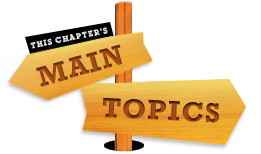Kumulipo— KumulipoHānau ka Pō.Pō gives birth to all living things.
Afraid of the dark? Don't be.
![[Night sky] Antlia Dwarf galaxy. Photo by ESA/NASA.](/unit-assets/kumulipo1.jpg)
Before coral grew in the sea, there was Pō. Before kalo covered the land, there was Pō. Before birds filled the sky, there was Pō. And way before light fills day, there is darkness—night—Pō.
![[Pillar coral] Photo by William Harrigan, NOAA Corps (ret.).](/unit-assets/kumulipo2.jpg) Can you imagine our world without coral, kalo, birds, or light? What would be left? Darkness. Night. A Hawaiian mele tells us that the world begins just like that—in the darkness of Pō. From Pō, all life is born: starfish, octopus, caterpillars, turtles, even rats and dogs. Following the birth of the other forms of life, man is born.
Can you imagine our world without coral, kalo, birds, or light? What would be left? Darkness. Night. A Hawaiian mele tells us that the world begins just like that—in the darkness of Pō. From Pō, all life is born: starfish, octopus, caterpillars, turtles, even rats and dogs. Following the birth of the other forms of life, man is born.
The mele that teaches us about the birthing of our world is called Kumulipo.
What is Kumulipo?
Kumulipo is a mele koʻihonua, a chant that recites birth order. What’s so special about Kumulipo is that it starts with the very first mating and birth. It is a record of the beginnings of the Hawaiian world. It has been kept and passed on orally for generations. Kumulipo is a cosmogony, a theory about the origin of the universe.
Kumulipo is also a genealogy for a chief of Kaʻū named Kaʻīamamao. He was also known as Lonoikamakahiki, the name given to him at birth. In its two thousand lines, Kumulipo traces the lineage of Kaʻīamamao and links him to the very forces of creation that gave birth to the world and all its life. The prophet and haku mele, Keaulumoku, is cited as its composer.
How does Kumulipo help me understand the natural world?
Kumulipo starts in Pō and lists the different life forms as they are born. The first organism born is the coral polyp, a very small and simple organism. It is a basic building block for life in the sea.
Kumulipo lists these births in sixteen “wā” or eras. Different types of creatures are born in each wā. As more and more organisms are born, they increase in size and complexity.
As the mele reaches the eighth wā, man is born. We enter a new age called “Ao,” or light. From this point on, the mele focuses on the human genealogy of Lonoikamakahiki.
As kanaka, we are born into the same family as the land, the sea, and the other living creatures. We all come from the same source, Pō. Kumulipo teaches us that there is a natural relationship among all living things.
What is the relationship?
In Kumulipo, man is last to be born. Therefore, kānaka are the younger siblings of the ʻāina and all living things. As a younger sibling, we have the kuleana to serve our older siblings. We observe, listen, and learn from them. In return, they care for us and provide us with nourishment.
What does it mean to be a sibling?
Humans and nature are like a huge family. We need to understand our role and responsibility in relation to all life. We realize that the things we do affect the world and other living things.
How is my understanding of Kumulipo connected to my well-being?
Within the listing of names and forms, Kumulipo whispers a message to us: It tells us that the creator of this mele comes from a rich tradition of observation and great respect for all life. We are just a small part of a huge, vastly complicated system—nature.
Our well-being depends on our ability to maintain the natural relationship with our elder siblings. In other words, we are family with our entire environment. We need to ensure that all life continues and that our actions do not hurt our ʻohana.
How are the ocean and the ‘āina related?
For nearly everything that is born in the ocean, a partner is born on land. The land partner is said to kiaʻi, or protect its ocean counterpart. This reminds us that what happens on land affects the ocean. We need to mālama ʻāina and care for our world. Here are some examples of the ocean and land partners. Can you find similarities between their names and forms?
Hānau ka ʻēkaha noho i kai
Kiaʻi ʻia e ka ʻēkahakaha noho i uka
Born is the ʻēkaha of the ocean
Guarded by the ʻēkahakaha of the land
Hānau ka ʻakiʻaki noho i kai
Kiaʻi ʻia e ka mānienie ʻakiʻaki noho i uka
Born is the ʻakiʻaki of the ocean
Guarded by the mānienie ʻakiʻaki of the land
Hānau ka ʻaʻalaʻula noho i kai
Kiaʻi ʻia e ka ʻalaʻala wai nui noho i uka
Born is the ʻaʻalaʻula of the ocean
Guarded by the ʻalaʻala wai nui of the land
Hānau ka heʻe noho i kai
Kiaʻi ʻia e ka ʻalaheʻe noho i uka
Born is the octopus of the ocean
Guarded by the ʻalaheʻe tree of the land
Hānau ka laumilo noho i kai
Kiaʻi ʻia e ka milo noho i uka
Born is the puhi laumilo of the ocean
Guarded by the milo tree of the land
Hānau ka ʻaʻawa noho i kai
Kiaʻi ʻia e ʻawa noho i uka
Born is the ʻaʻawa of the ocean
Guarded by the ʻawa plant of the land
